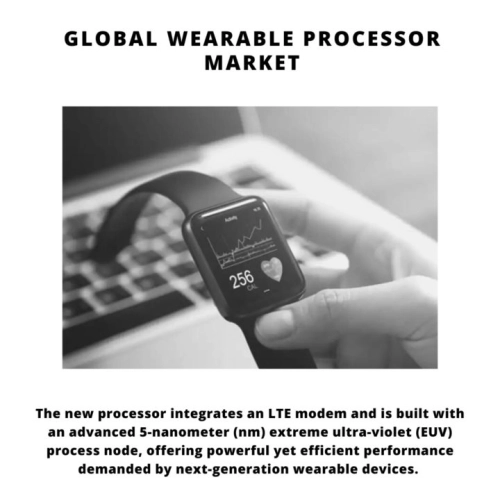
- Get in Touch with Us

Last Updated: Apr 25, 2025 | Study Period: 2022-2027
In today's society and sectors, wearable technology is fast becoming a key force. Wearable technology has evolved for a variety of reasons, the most important of which is the development of compact, lightweight electronics that can be worn on the body without impeding movement.

Wearable technology, like many other technical advancements, has emerged from conventional sectors of health and military research, as well as ordinary consumer items such as purses and watches. Sensory feedback can be enhanced with the use of electronic equipment.
Many people have sensory processing abnormalities, such as sensory integration disorder, which causes them to have difficulties with textures, odours, and other "bodily" sensations.
The rising prevalence of chronic diseases and obesity has contributed to the adoption of wearable products such as activity trackers and body monitors that provide real-time information on the userâs overall wellbeing.
The Global Wearable Processor Market accounted for $XX Billion in 2021 and is anticipated to reach $XX Billion by 2026, registering a CAGR of XX% from 2022 to 2027.
Samsung Electronics, a world leader in advanced semiconductor technology, announced its new wearable processor, the Exynos W920.
The new processor integrates an LTE modem and is the first in the industry to be built with an advanced 5-nanometer (nm) extreme ultra-violet (EUV) process node, offering powerful yet efficient performance demanded by next-generation wearable devices.
The Exynos W920 packs two Arm Cortex-A55 cores for high-performing yet power-efficient processing and an Arm Mali-G68 GPU that boasts improved CPU performance of around 20-percent and ten times better graphics performance than its predecessor.
With upgraded cores and improved performance, the Exynos W920 enables faster application launches and a more interactive eye-catching 3D graphical user interface (GUI) on a deviceâs qHD display.
| Sl no | Topic |
| 1 | Market Segmentation |
| 2 | Scope of the report |
| 3 | Abbreviations |
| 4 | Research Methodology |
| 5 | Executive Summary |
| 6 | Introduction |
| 7 | Insights from Industry stakeholders |
| 8 | Cost breakdown of Product by sub-components and average profit margin |
| 9 | Disruptive innovation in the Industry |
| 10 | Technology trends in the Industry |
| 11 | Consumer trends in the industry |
| 12 | Recent Production Milestones |
| 13 | Component Manufacturing in US, EU and China |
| 14 | COVID-19 impact on overall market |
| 15 | COVID-19 impact on Production of components |
| 16 | COVID-19 impact on Point of sale |
| 17 | Market Segmentation, Dynamics and Forecast by Geography, 2022-2027 |
| 18 | Market Segmentation, Dynamics and Forecast by Product Type, 2022-2027 |
| 19 | Market Segmentation, Dynamics and Forecast by Application, 2022-2027 |
| 20 | Market Segmentation, Dynamics and Forecast by End use, 2022-2027 |
| 21 | Product installation rate by OEM, 2022 |
| 22 | Incline/Decline in Average B-2-B selling price in past 5 years |
| 23 | Competition from substitute products |
| 24 | Gross margin and average profitability of suppliers |
| 25 | New product development in past 12 months |
| 26 | M&A in past 12 months |
| 27 | Growth strategy of leading players |
| 28 | Market share of vendors, 2022 |
| 29 | Company Profiles |
| 30 | Unmet needs and opportunity for new suppliers |
| 31 | Conclusion |
| 32 | Appendix |